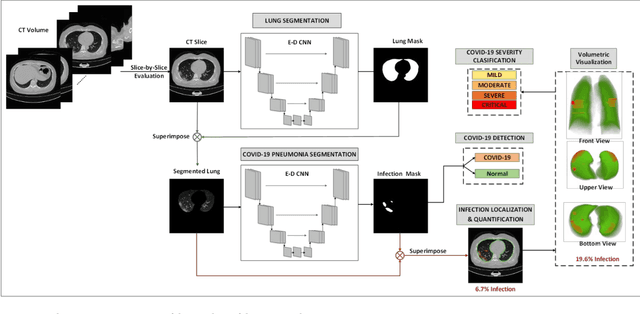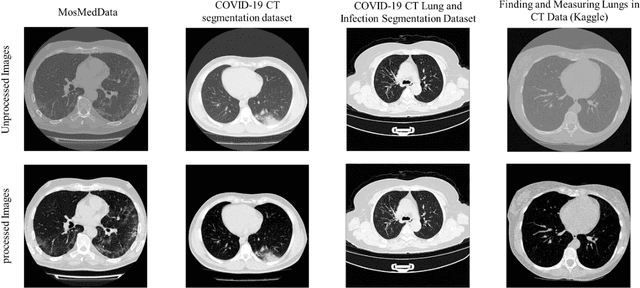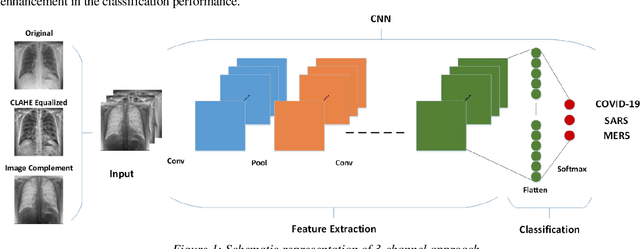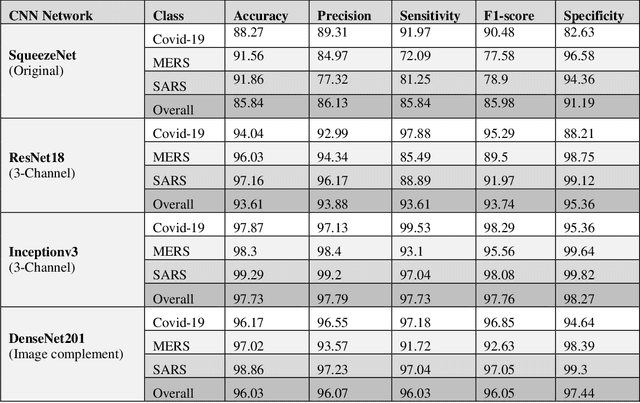Farayi Musharavati
Detection and severity classification of COVID-19 in CT images using deep learning
Feb 15, 2021



Abstract:Since the breakout of coronavirus disease (COVID-19), the computer-aided diagnosis has become a necessity to prevent the spread of the virus. Detecting COVID-19 at an early stage is essential to reduce the mortality risk of the patients. In this study, a cascaded system is proposed to segment the lung, detect, localize, and quantify COVID-19 infections from computed tomography (CT) images Furthermore, the system classifies the severity of COVID-19 as mild, moderate, severe, or critical based on the percentage of infected lungs. An extensive set of experiments were performed using state-of-the-art deep Encoder-Decoder Convolutional Neural Networks (ED-CNNs), UNet, and Feature Pyramid Network (FPN), with different backbone (encoder) structures using the variants of DenseNet and ResNet. The conducted experiments showed the best performance for lung region segmentation with Dice Similarity Coefficient (DSC) of 97.19% and Intersection over Union (IoU) of 95.10% using U-Net model with the DenseNet 161 encoder. Furthermore, the proposed system achieved an elegant performance for COVID-19 infection segmentation with a DSC of 94.13% and IoU of 91.85% using the FPN model with the DenseNet201 encoder. The achieved performance is significantly superior to previous methods for COVID-19 lesion localization. Besides, the proposed system can reliably localize infection of various shapes and sizes, especially small infection regions, which are rarely considered in recent studies. Moreover, the proposed system achieved high COVID-19 detection performance with 99.64% sensitivity and 98.72% specificity. Finally, the system was able to discriminate between different severity levels of COVID-19 infection over a dataset of 1,110 subjects with sensitivity values of 98.3%, 71.2%, 77.8%, and 100% for mild, moderate, severe, and critical infections, respectively.
Coronavirus: Comparing COVID-19, SARS and MERS in the eyes of AI
Jun 08, 2020



Abstract:Novel Coronavirus disease (COVID-19) is an extremely contagious and quickly spreading Coronavirus disease. Severe Acute Respiratory Syndrome (SARS)-CoV, Middle East Respiratory Syndrome (MERS)-CoV outbreak in 2002 and 2011 and current COVID-19 pandemic all from the same family of Coronavirus. The fatality rate due to SARS and MERS were higher than COVID-19 however, the spread of those were limited to few countries while COVID-19 affected more than two-hundred countries of the world. In this work, authors used deep machine learning algorithms along with innovative image pre-processing techniques to distinguish COVID-19 images from SARS and MERS images. Several deep learning algorithms were trained, and tested and four outperforming algorithms were reported: SqueezeNet, ResNet18, Inceptionv3 and DenseNet201. Original, Contrast limited adaptive histogram equalized and complemented image were used individually and in concatenation as the inputs to the networks. It was observed that inceptionv3 outperforms all networks for 3-channel concatenation technique and provide an excellent sensitivity of 99.5%, 93.1% and 97% for classifying COVID-19, MERS and SARS images respectively. Investigating deep layer activation mapping of the correctly classified images and miss-classified images, it was observed that some overlapping features between COVID-19 and MERS images were identified by the deep layer network. Interestingly these features were present in MERS images and 10 out of 144 images were miss-classified as COVID while only one out of 423 COVID-19 images was miss-classified as MERS. None of the MERS images was miss-classified to SARS and only one COVID-19 image was miss-classified as SARS. Therefore, it can be summarized that SARS images are significantly different from MERS and COVID-19 in the eyes of AI while there are some overlapping feature available between MERS and COVID-19.
 Add to Chrome
Add to Chrome Add to Firefox
Add to Firefox Add to Edge
Add to Edge